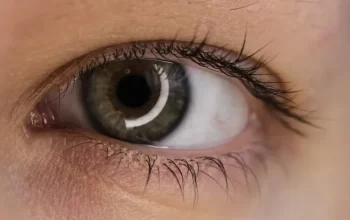Humans are the only known hosts infected with Crimean-Congo Hemorrhagic Fever Virus that will exhibit symptoms. The infection has the ability to induce CCHF, a severe hemorrhagic fever marked by fever, paralysis, major hemorrhages, and, in extreme cases, mortality. Visit Doctoroncall to get an online consultation if you think you are having Crimean-Congo Hemorrhagic Fever. The symptoms of this infection progresses quickly and is classified into four stages:
- Incubation stage
The clinical manifestation caused by CCHFV is a severe type of hemorrhagic fever. The incubation stage after a tick bite infection is normally two to three days but may persist as long as nine days, while the incubation stage following contact with infected blood or tissues is commonly five to six days with a reported maximum of 13 days.
- Pre-hemorrhagic stage
The pre-hemorrhagic phase begins abruptly, with fever, myalgia (muscle discomfort), disorientation, cervical pain and stiffness, back pain, headache, itchy eyes, and photophobia (sensitivity to light).
Early in the acute infection stage, typical symptoms include nausea, vomiting (which may escalate to serious bleeding and be deadly if not treated), diarrhea, stomach pain, and sore throat, followed by significant mood changes, anxiety, and disorientation.
After a few days, the agitation may be replaced by lethargy, sadness, and malaise, and the stomach discomfort may become localized to the upper right quadrant, with visible liver enlargement.
- Hemorrhagic stage
As the disease proceeds into the hemorrhagic phase, extensive regions of severe bruising, acute nosebleeds and profuse bleeding at the tick bite area may be noted, starting around the fourth day of infection and continuing approximately two weeks.
Other clinical characteristics include tachycardia (rapid heart rate), lymphadenopathy (enlarged lymph nodes), and petechiae (a rash characterized by bleeding into the skin) on internal mucosal membranes such as the mouth and throat, as well as on the skin. The petechiae may progress to bigger rashes known as ecchymoses, as well as other hemorrhagic disorders.
There are also signs of hepatitis, and critically affected patients can develop renal failure, liver failure, or pulmonary failure after the fifth day of infection.
- Recovery stage
Recovery usually occurs on the ninth or tenth day following the first day of symptoms in patients who survive. The long-term implications of CCHF infection in survivors have not been thoroughly investigated to determine whether or not specific complications exist. However, recovery process will take a very long time.
It should be highlighted that the length and severity of symptoms in each of these stages vary significantly amongst patients. The pathogenesis of CCHF is only poorly understood for a number of reasons, including the fact that infections take place sporadically and in areas where facilities for conducting complete autopsies are limited, virus handling requires biosafety level 4 containment laboratories, and there are no available animal studies of the disease.
Diagnosis
During the acute phase of the disease, a patient with a clinical history corresponding with CCHF may be diagnosed in the laboratory through a combination of viral antigen detection (ELISA antigen capture), viral RNA sequencing (RT-PCR) in blood or tissues obtained from a dead patient, and virus isolation. In formalin-fixed tissues, immunohistochemical staining may also reveal viral antigen. Antibodies could be identified in the blood of patients who survive the infection later on. However, antigen, viral RNA, and virus are no longer present or detectable.
Treatments
There are no particular treatments that have been shown to be effective in the treatment of CCHF patients. Differential diagnosis is critical, and other probable explanations of the symptoms must be considered. Broad-spectrum antibiotics should be recommended after a septic treatment. Supportive treatments to enhance hemostasis are needed, and if necessary, red blood cells, fresh–frozen plasma, and/or thrombocyte solutions should be given to the patients. In order to reduce the risk of nosocomial infections, preventive measures should be implemented.



